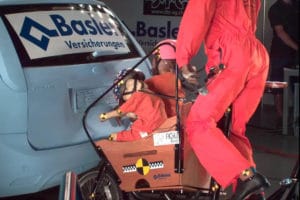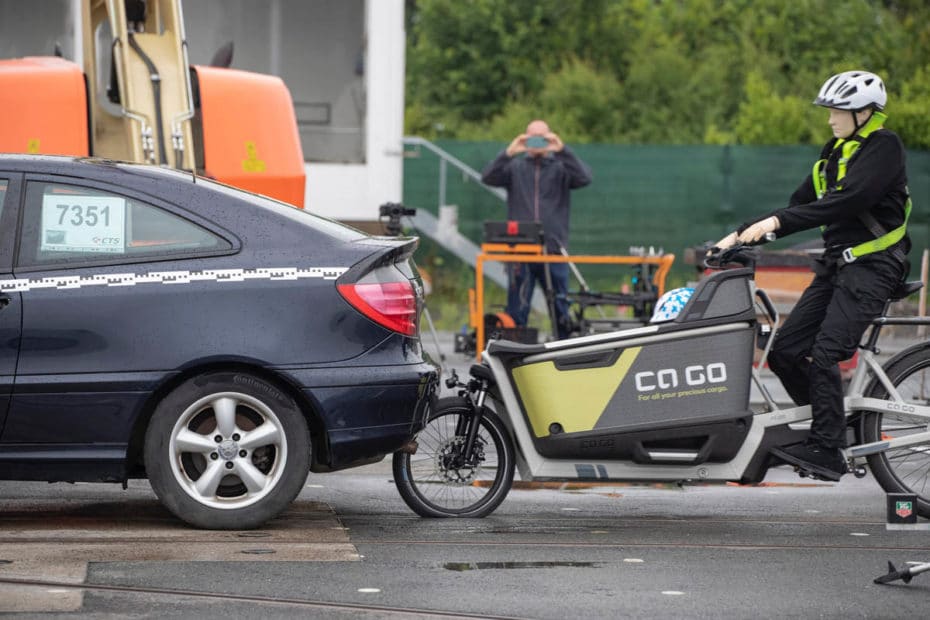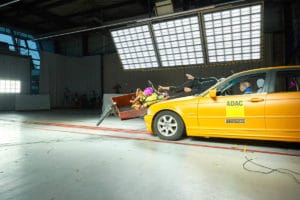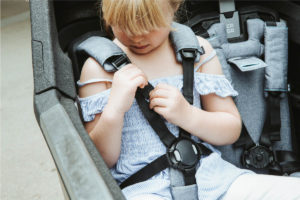Seat belts tear. Seat benches break from their mountings. Children are thrown out of transport boxes. Crash tests simulating accidents between e-bikes and cars have shown such dramatic consequences. The results of such tests are basically correct. However, initiators such as insurance companies or automobile clubs refrain from naming the tested models. Instead, final reports contain statements that refer generally to entire types of bicycles. For the manufacturer Ca Go, this sort of imprecision in reporting apparently goes too far. It has now re-enacted the test of a Swiss insurance company. An independent expert’s office certifies that the Ca Go FS 200 has a convincing level of safety.
The previous events
The Ca Go project was preceded by two crash tests. The first one was conducted by Basler Versicherung. In the summer of 2020, they had an e-cargo bike hit the rear of a parked car at a speed of 25 km/h at the Dynamic Test Centre (DTC) in Vauffelin. One of two belted child dummies would have been strangled by the belt in reality and died. As the belt came loose from its mount during the impact, the second child would have hit the car hard with its head and suffered severe injuries.

Apart from the seat belts, there were no other visible safety systems for the passengers on the e-cargo bike tested by Basler Versicherung.
The initiator of the second test was the Allgemeine Deutsche Automobil-Club e. V. (ADAC) was the initiator of the second test. In its own test centre this summer, it simulated what can happen when a car travelling at a speed of 30 km/h crashes into an e-cargo bike at an angle of 45 degrees. As in the Basler Versicherung simulation, a Longjohn was among the bikes tested. Hit by the car, the test vehicle tipped over and skidded several metres. A foldable seat bench was torn from its mounting. Because the seat belt and restraint system were also attached to the bench, the two dummy children being transported fell out of the cabin.
Not all bicycles are the same
Both ebikes ridden in the tests, however, have decisive differences to the FS 200 from Ca Go. The ADAC used a “Cargo Classic Short” from the Dutch manufacturer Bakfiets. We were not able to find out exactly which model the Basler insurance company used. However, in the design of the transport box, the child seats, the chassis and other details, it is obvious at first glance that all three are not on the same safety level. The outcome of such tests is therefore always directly related to the bike tested and cannot be generalised.
The test by Ca Go
To back this up with reliable data, Ca Go had its own test carried out along the lines of the Basler Versicherung. So, on the premises of the CTS Crash Test Service in Münster, a Longjohn occupied by two children once again hit the rear of a standing station wagon at 25 km/h. The test was observed by independent assessor Tobias Steinacker. This was observed by the independent assessor Tobias Steinacker. As a doctor of engineering and generally sworn-in and publicly appointed expert for road traffic accidents, he followed the course of the tests and the determination of the corresponding data.
According to Ca Go, based on the measured acceleration of the dummies’ heads, it can be determined that in the event of a collision with an FS 200, the risk of injury to the passengers is low. For example, the measured values were more than seven times lower than the limit at which motorbike helmets are considered safe when it comes to maximum acceleration of the head. According to the manufacturer, it also measured low acceleration values for the head and body when the cargo bike is hit from the side or when it falls over from a standing position.
Expert is impressed
In the simulated scenarios, the restraint systems also proved to be reliable. Head restraint and ortho-safety collar prevented the neck from being overstretched. Part of the impact energy was absorbed by the passenger cell as planned. Therefore, Ca Go itself comes to the conclusion that riding in a cargo bike can be considered safe for a child if the construction is designed for this purpose, as is the case with the Ca Go FS 200. Expert Tobias Steinacker shares this assessment: “The safety concept of the Ca Go FS 200 absolutely convinced me after the crash tests that were carried out. The highlight is above all the Ortho-Safety-Collar with its similarity to racing and thus the excellently implemented idea of increasing the passive safety of the transported children.”
The Ortho-Safety-Collar is a safety collar that minimises the impact of a collision and acts as an important barrier to ensure that only a minimum of the energy actually reaches the passengers’ bodies. Additional protection is provided by the FS 200’s five-point harness system and height-adjustable headrests. By the way, so far you will only find these details on this e-bike.
Safety remains the focus
It is quite possible that other manufacturers will follow suit in the near future. The image of cargo bikes can only benefit from this. The developers at Ca Go have already announced that they will not rest on their laurels. They want to continue working on passive and active safety concepts.
Pictures: Ca Go Bike GmbH; ADAC; Ringier AG


